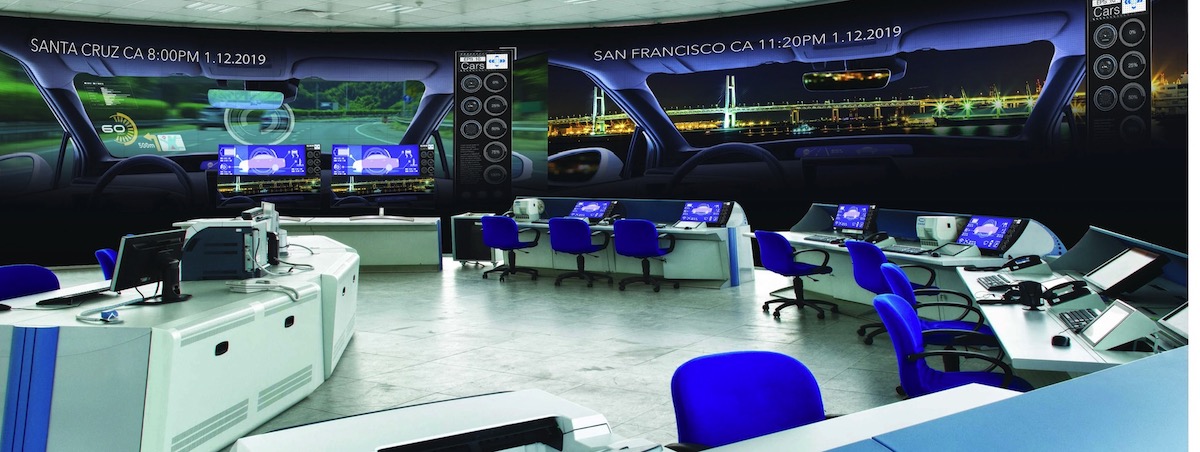
LG, Userful Partner On Integrated AV-Over-IP Digital Signage And Visual Display Solution
February 10, 2022 by Dave Haynes
LG and the Canadian software company Userful have announced a joint solution designed to make digital signage and other visual display applications both feasible and reliable over the local and wide area networks of enterprise-level corporate clients.
The solution is described in PR, in language that mostly makes me go cross-eyed, as an “end-to-end, software-defined AV-over-IP solution that combines Userful’s Visual Networking Platform and LG’s webOS Signage platform to optimize display networks for control rooms, digital signage networks, corporate signage and video walls.”
As a result of the Userful-LG collaboration, digitally-integrated enterprises in key markets around the world can now deploy IT-managed services from virtually any source to webOS displays with advanced streaming capabilities, flexibility in deployment and NIST-caliber security. Whether it’s providing immediate video and data through real-time streaming protocols (RTSP) for control rooms or managing 8K content across hundreds of displays, integrators and end-users can expect to enjoy a powerful, streamlined display network management experience with the Userful platform and LG displays.
The solution is as much or more about things like big displays for control rooms and ops centers, but more conventional workplace digital signage would be another type of endpoint.
The PR adds:
According to Gianni Restaino, LG Business Solutions USA’s vice president of engineering, the alliance will deliver the future of display network management just in time to help integrators and enterprise businesses capitalize on the exponential growth forecasted for AV-over-IP in the next five years. “Together, LG and Userful have created a digital display network management platform that can both simplify and empower LG installations to enable security, content delivery speed, and flexibility in content delivery and display deployment.”
“With the acceleration of new services and digital transformation, there is a clear need for a centralized platform to manage visual services in combination with data, IoT and AI,” Restaino added. “”Userful’s software-defined platform uniquely integrates all of these, and delivers them through private/public cloud servers to webOS signage displays optimized for the network, enabling AV services across an entire organization.” ”
The companies jointly recognized the growth potential of AV-over-IP in 2019 and began developing a custom, lightweight software solution that runs on top of LG’s webOS Signage platform for flat-panel and direct-view LED displays, focusing on simplicity, reliability, flexibility and security. According to Userful, the resulting platform is expected to deliver significant hardware and energy cost savings while helping to reduce carbon footprints.
The potential market growth is enormous, with applications ranging from mission critical displays and enterprise-wide digital signage networks to corporate lobby video walls and large conference room displays. In fact, according to Maia Research, the AV-over-IP market is poised to grow from $3 billion today to $51 billion in 2027, with 85 percent of growth expected in the corporate, government and education sectors,* positioning the LG-Userful solution to meet the demand for display network improvements and enhanced capabilities.
Userful CEO John Marshall suggests other display manufacturers have been unable to match LG’s level of software integration.
“The industry underestimates the difficulty of optimizing traditional AV products for an IT environment, especially with network distribution challenges and demanding enterprise applications,” Marshall says. “The AV industry has historically worked with NAB codecs and AV standards, focusing on the highest-quality AV over cabled HDMI technology – the addition of multi-protocol-driven networks is an entirely new challenge. That LG was able to integrate such IT protocols into its core firmware, at the very heart of its media pipeline, is beyond impressive. Simply put, this solution simplifies the job of IT and can reduce installation and maintenance complexity.”
In addition to LG, Userful worked with other display manufacturers “who proceeded to fail at such sophisticated integration of IT standards in their firmware,” Marshall adds. “Such developments highlighted the difference between low-cost display manufacturers and modernized IT-ready displays that suit the needs of the modern enterprise. We’re proud to work together to lead the way forward for the industry and deliver new solutions to improve enterprise business operations.”
I don’t know a hell of a lot about AV over IP, but I gather the nut of this is that the solution removes or reduces the need for local end-points and cabling, improves quality of service for video streaming, and ups security. Streaming is so common now. The steady improvements in broadband and network tech have meant the idea of doing digital signage just over a network no longer seems like something that would mean a lot of spinning “Buffering” icons on screens and slowed, data-clogged LANs and WANs.
Marshall’s framing of this is interesting, in that he has chosen LG as his dance partner and cut bait on LG’s main displayco rivals, saying they have failed at doing this kind of solution. Again, I dunno that much about this very specific stuff, but certainly know there are Samsung smart displays being used for IPTV in places like sports and entertainment venues.



Generally AV-over-IP is the long version of PoE. Big deal in thinclient world. Advantages are: Cat5 already in place, much greater distance than traditional baseband, really no limit on devices that can be connected. Only requirements are Cat5/6 and a modern router.